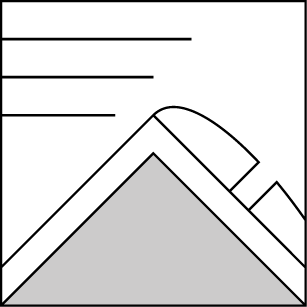Basic Information
Observation Details
Observation Date:
January 1, 2022Submitted:
January 1, 2022Observer:
SAC - Scott Savage - OFF DUTY REC DAYZone or Region:
Soldier and Wood River Valley MtnsLocation:
Indian Creek (W/SW-W-NW-N-NE: 5900-8100')Signs of Unstable Snow
Recent Avalanches?
None ObservedCracking?
None ExperiencedCollapsing?
None ExperiencedSnow Stability
Stability Rating:
GoodConfidence in Rating:
ModerateStability Trend:
SteadyBottom Line
I didn't find any old October snow where we considered being in avalanche terrain. Where we traveled, we saw no signs of instability in non-wind-loaded terrain. We avoided the obvious, isolated wind-loaded features on steep slopes in this area. Where we traveled, avoiding wind-loaded slopes dramatically reduced the chances of getting in trouble. In the larger nearby drainages (Big Wood, Croy, Quigley, etc), there was more evidence of wind in the past 48 hrs; the S face of Carbonate looked like a ski area yesterday, and the wind obliterated the tracks overnight.
Media/Attachments

Advanced Information
Weather Summary
Cloud Cover:
ClearTemperature:
Near zero FWind:
LightNew/Recent Snowfall:
No new snowfall.Winds were calm for the most part. There is a moderate amount of snow available for transport, but I think winds would need to change directions or increase to STR-EXT speeds to move a lot of snow.
Snowpack Observations
+/- NW up to 6500': HS=30-50cm, fair amount of faceting in the lower half of the snowpack, no slab to speak of, small SH on surface
7400' W/SW 35* slope (see pit image): HS=50-60cm, thin crust (wind, but not sure?) below about .5cm of PP, then DF 4F>1F for the upper half of the pack, then matrix of 3 crusts with some FC and mixed forms between/above/below them (12/19-22 layers), then mostly RG 1F and P except some FC/mixed forms closer to the ground: ECTN13 @ upper of 3 crust/FC interfaces (Q2), ECTN21@ ground (Q3)
7800-8200 NW-N: wind hammered sastrugi with some hard slab rollers in typical cross-loaded areas (photo), no cracking or collapsing when jumping around on the hard slabs in mellow terrain, didn't sound as hollow as I expected they would have. I didn't dig to look for old Oct snow here, but there's a good chance there was some in this "zone".
7000-7800' NW-N-NE (minimal wind effects in this area): HS=consistent 70-80cm, well-graded snowpack. Layers near the ground and near the surface appear to be losing some hardness/faceting. 12/19-22 layer was much more subtle than on solar aspects - no crust, but some faceting. I did not look for SH with a lens, but there were no large SH particles. Partner was cold, so no formal stability tests performed. Hand tap tests and pulling/shear tests (both on isolated small columns) required moderate force to get borderline Q1/Q2 shears on mid-pack interface. There isn't much weight or stiffness in the snow/slab above the potential mid-pack weakness.

Avalanche Problems
| Problem | Location | Distribution | Sensitivity | Size | Comments |
|---|---|---|---|---|---|
 Wind Slab
Wind Slab
|
|
Layer Depth/Date: 10-30cm Comments: Shaded area in Location graphic is where we observed recently wind-loaded slopes. Hard slabs were unreactive. The softer slabs at/near corniced areas were stubborn to unreactive and were more isolated as well as smaller in areal coverage (extending only 10' downslope). Minimal cracking in softer wind slabs, and no cracking in the hard slabs. |
Terrain Use
We traveled in non-wind-loaded terrain up to around 35*. We planned to avoid wind-loaded terrain and all slopes with old Oct snow, and we stuck to that plan.

